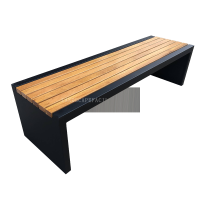Welcome to the website for landscape facilities products and knowledge.
How does the bin’s design ensure it remains visually unobtrusive in natural landscapes?
The integration of waste bins into natural landscapes requires thoughtful design to avoid disrupting the aesthetic harmony of the environment. Modern bin designs achieve this through several key strategies.
1. Neutral Color Palettes: Bins are often crafted in earthy tones like greens, browns, or grays, allowing them to blend with surrounding foliage, rocks, or soil. This reduces visual contrast and makes them less noticeable.
2. Minimalist Shapes: Simple, geometric forms mimic natural elements such as boulders or tree trunks, avoiding sharp edges or bright colors that stand out.
3. Material Selection: Using natural or recycled materials like wood, stone-textured plastics, or rust-resistant metals ensures bins age gracefully and harmonize with their surroundings.
4. Strategic Placement: Bins are positioned along pathways or behind vegetation, leveraging existing visual barriers to minimize their presence.
5. Low-Profile Design: Flatter or recessed bins reduce their silhouette, making them less obtrusive while maintaining accessibility.
By prioritizing these elements, designers create bins that serve their purpose without compromising the beauty of natural landscapes. This approach aligns with eco-friendly principles, ensuring waste management solutions coexist seamlessly with the environment.
Related search:

Recommendation
Modern Stainless Steel Begonia Wood Park Chair Outdoor Courtyard Leisure Sun Protection Bench Long Seat